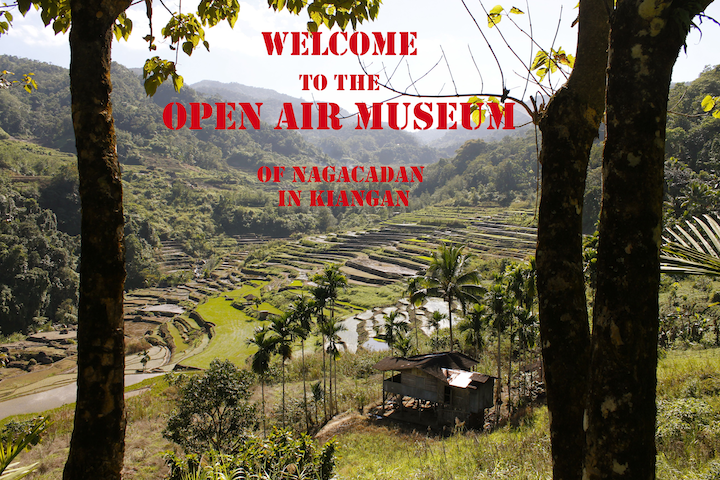Visit the Open Air Museum in Nagacadan
Experience this unique hike trough the rice fields of Nagacadan in Kiangan and learn more about the ingenuous culture of the Ifugaos.
In the Open Air Museum of Nagacadan you immerse into the world of the Ifugao farmers nowadays and their history. A comfortable pathway leads you through the rice fields, the forests, the villages and over the rivers of Nagacadan. During the walk you will encounter several native houses and granaries where you can experience the Ifugao agri-culture with all your senses; you may listen to the Hud-Hud-Chants sung by the Ifugao women while harvesting the rice; you read about the different Ifugao rituals, closely correlated to the rice cycle – the basis of the Ifugaos livelihood; you enter a native house to know the traditional way of live; you try yourself to tie the rice bundles and make them ready for storage or to carv a Ifugao ceremonial figurine called Bulul. At the same time you’re surrounded by this unique landscape of the GIAHS and UNESCO World heritage site of Nagacadan. You’re accompanied by a local tour guide, who will explain you the history of the place. You may meet the friendly people of Nagacadan who enjoy to share their stories with you.
Goal and Objectives
Concept of the Open Air Museum in Nagacadan
The Open Air Museum in Nagacadan is a community-based project, initiated by the local Municipality in collaboration with the GIAHS project (FAO). The museum is managed by the Barangay community, involving all important associations of Nagacadan. The benefits flow directly to the community and are used for the valorization of their culture. Partly for the maintenance of the museum itself, partly for the repair and maintenance of the rice terraces, the irrigation systems, the festivals according to the Ifugao year or for traditional ceremonies. The concept of the museum sets a great store by keeping the way of the return of investment as short as possible.
